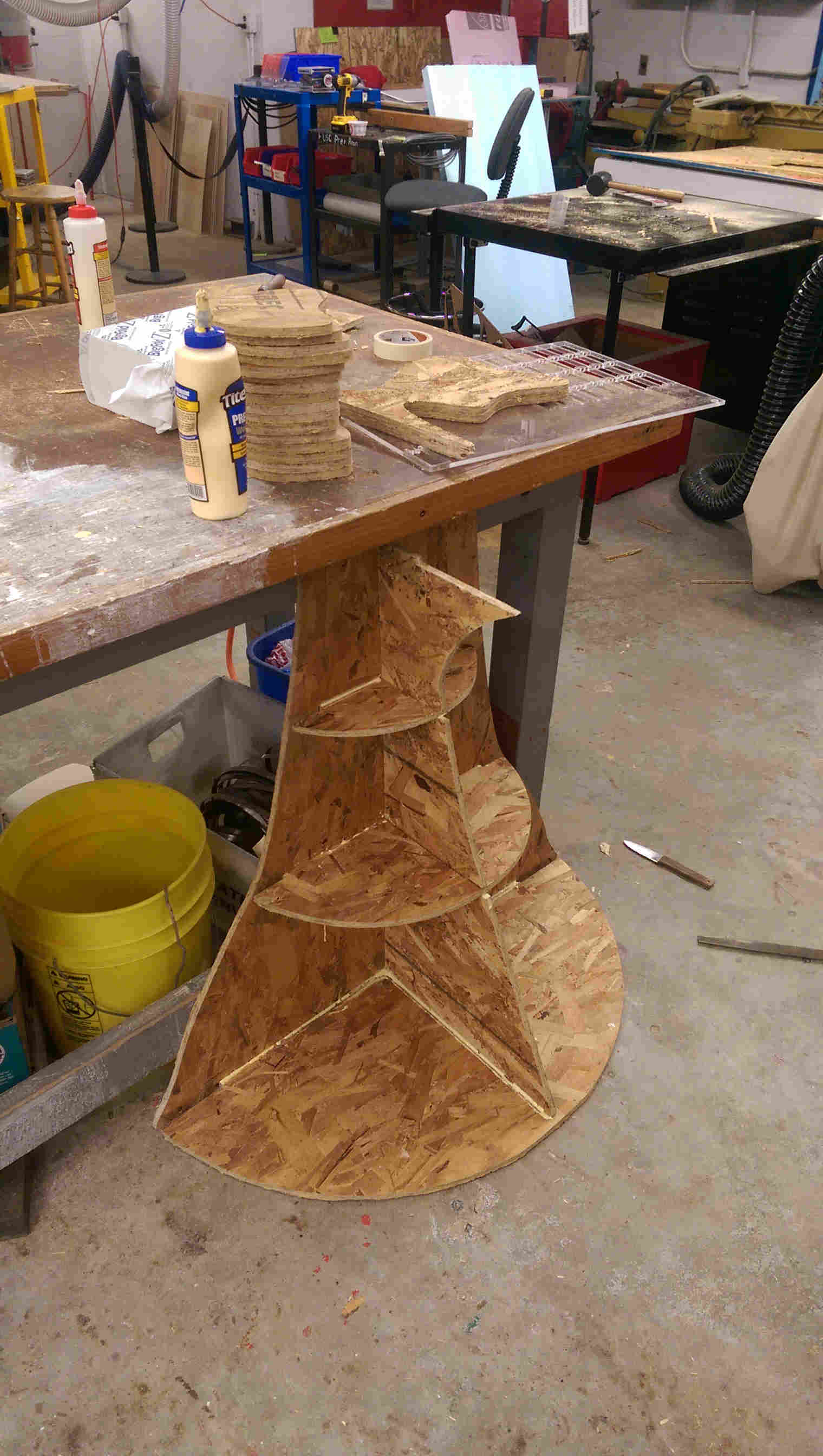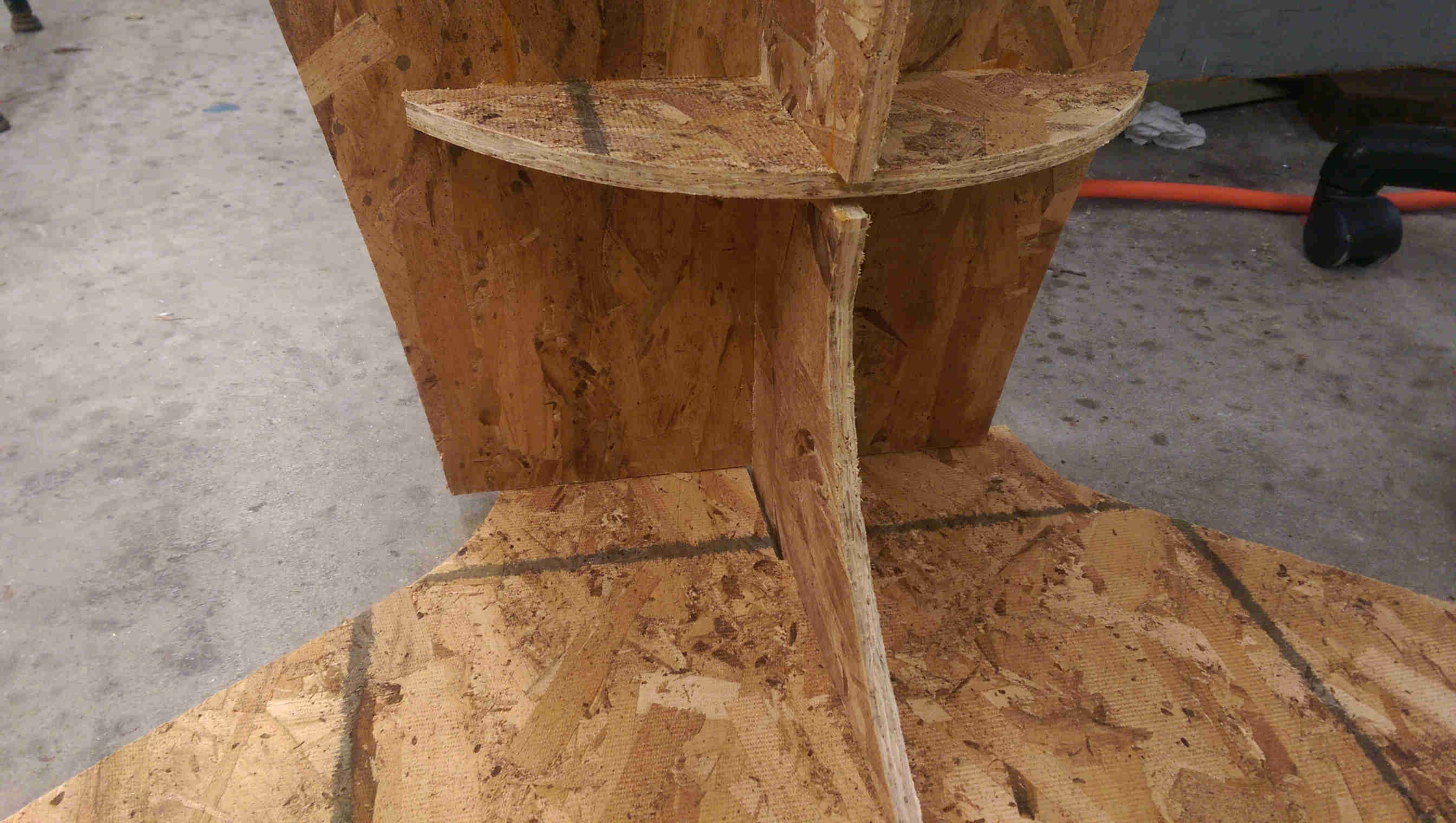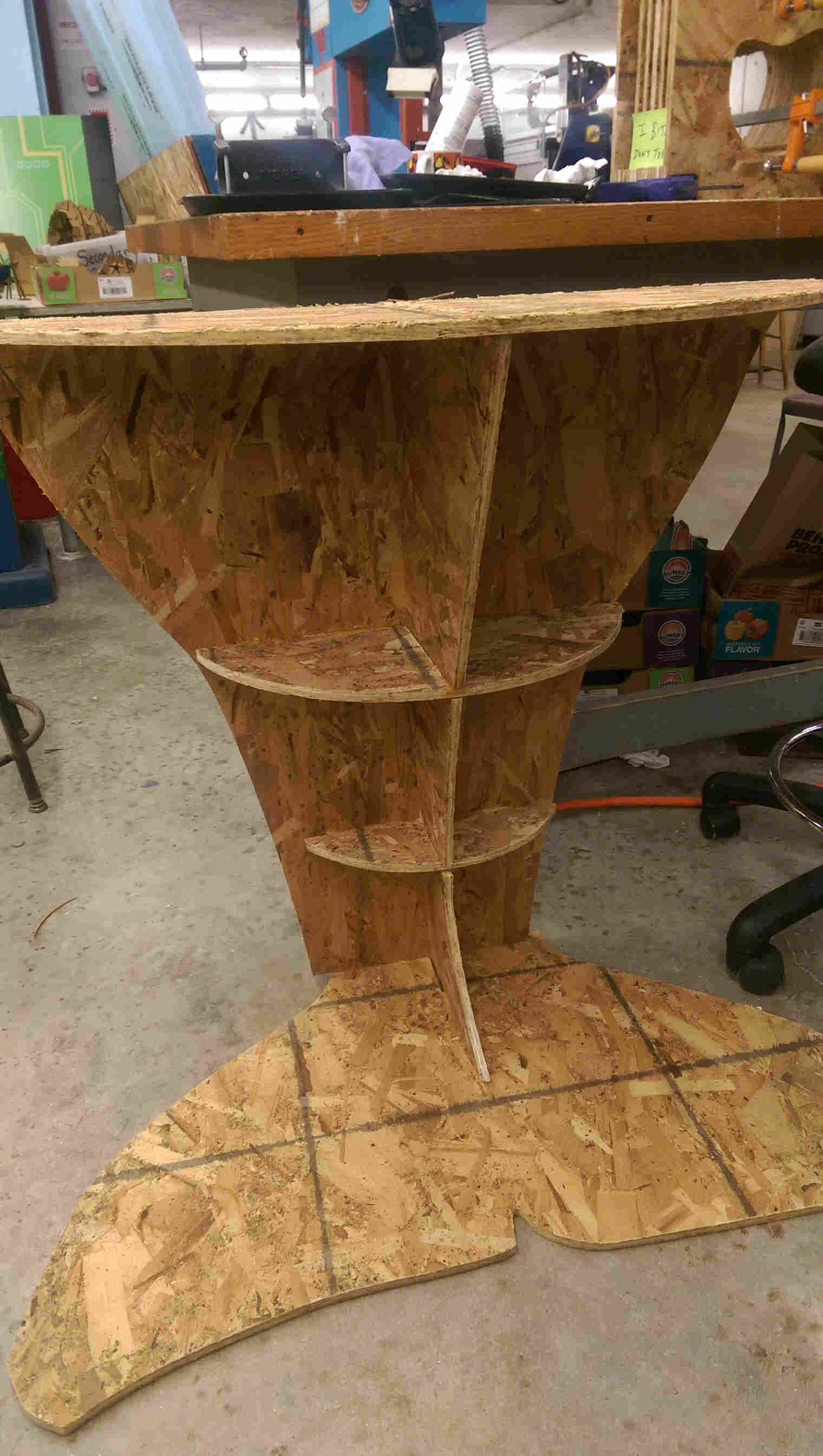week 4: make something big
This week we explore an exercise in large-scale CNC machining out of two 4'x4' pieces of OSB wood
design
We were instructed to make something big. Whales are pretty big. Of course, making a whole whale-sized object out of plywood is not really reasonable. But I decided to adapt a piece of one (specifically the tail) for a furniture design.
My design went through several iterations. The first version (from back in week 0) was of a bookshelf shaped as a whale tail emerging from the water. I decided that since I already had a bookshelf (and that the 4'x4' tool space restriction for the ShopBot would restrict it to be a small bookshelf) I adapted the design to make it a table (either a standing desk, end table, or coffee table, depending on the final size).
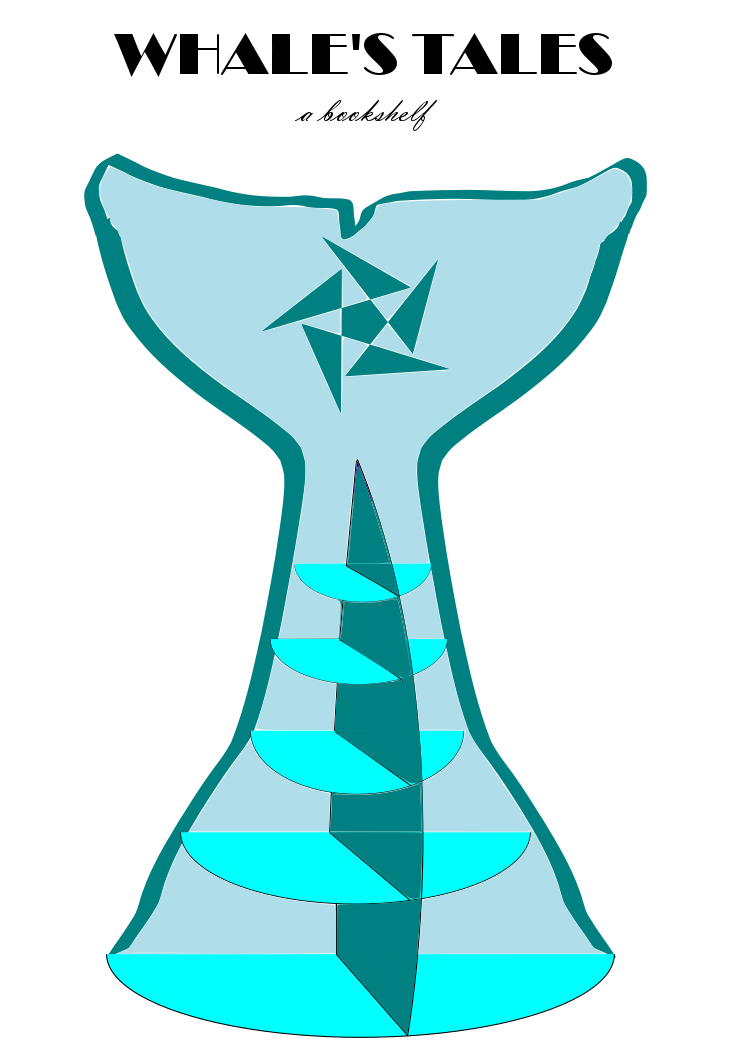
original design (done in inskcape)
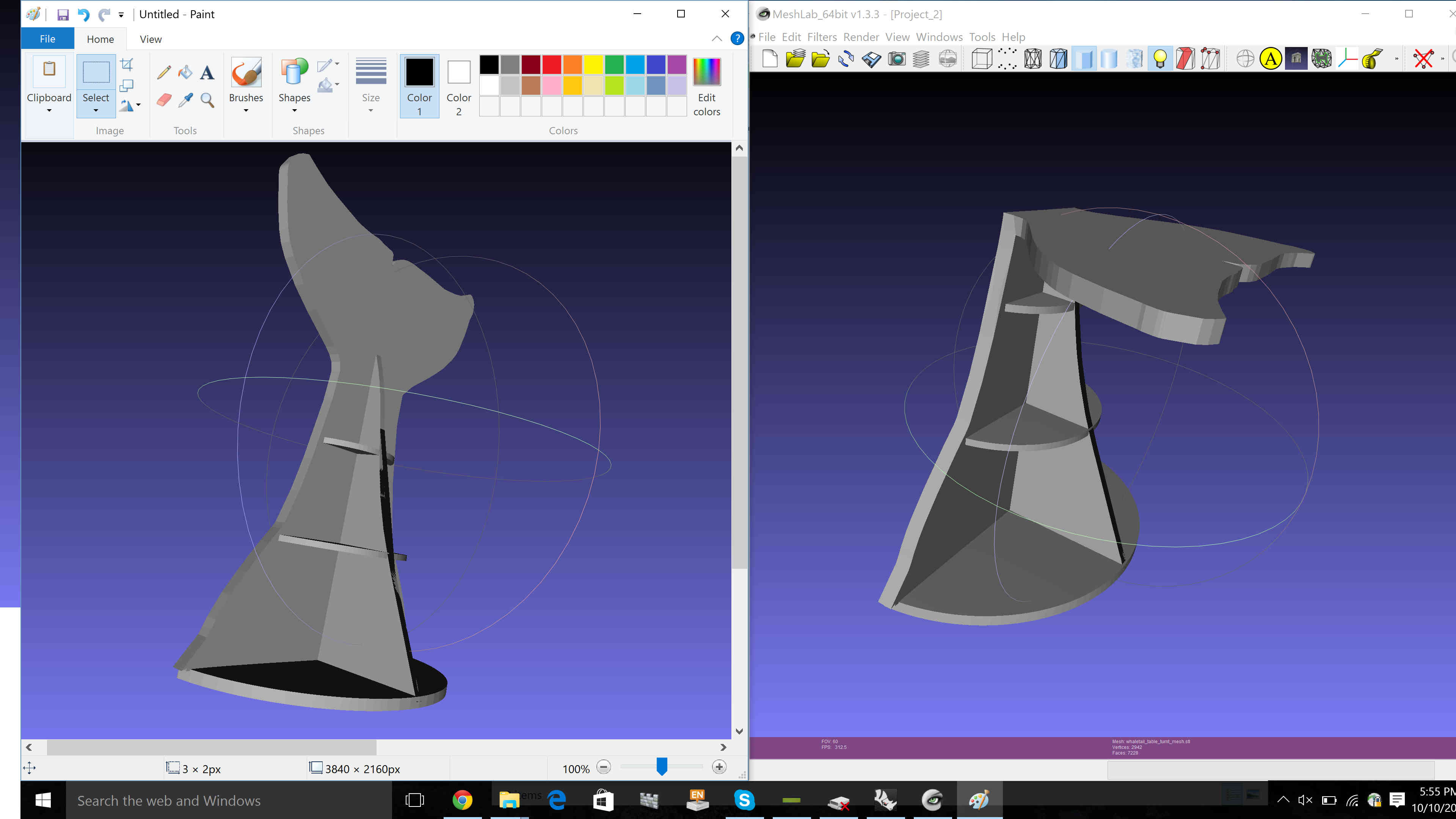
.stl files of two versions of design, exported from Rhino
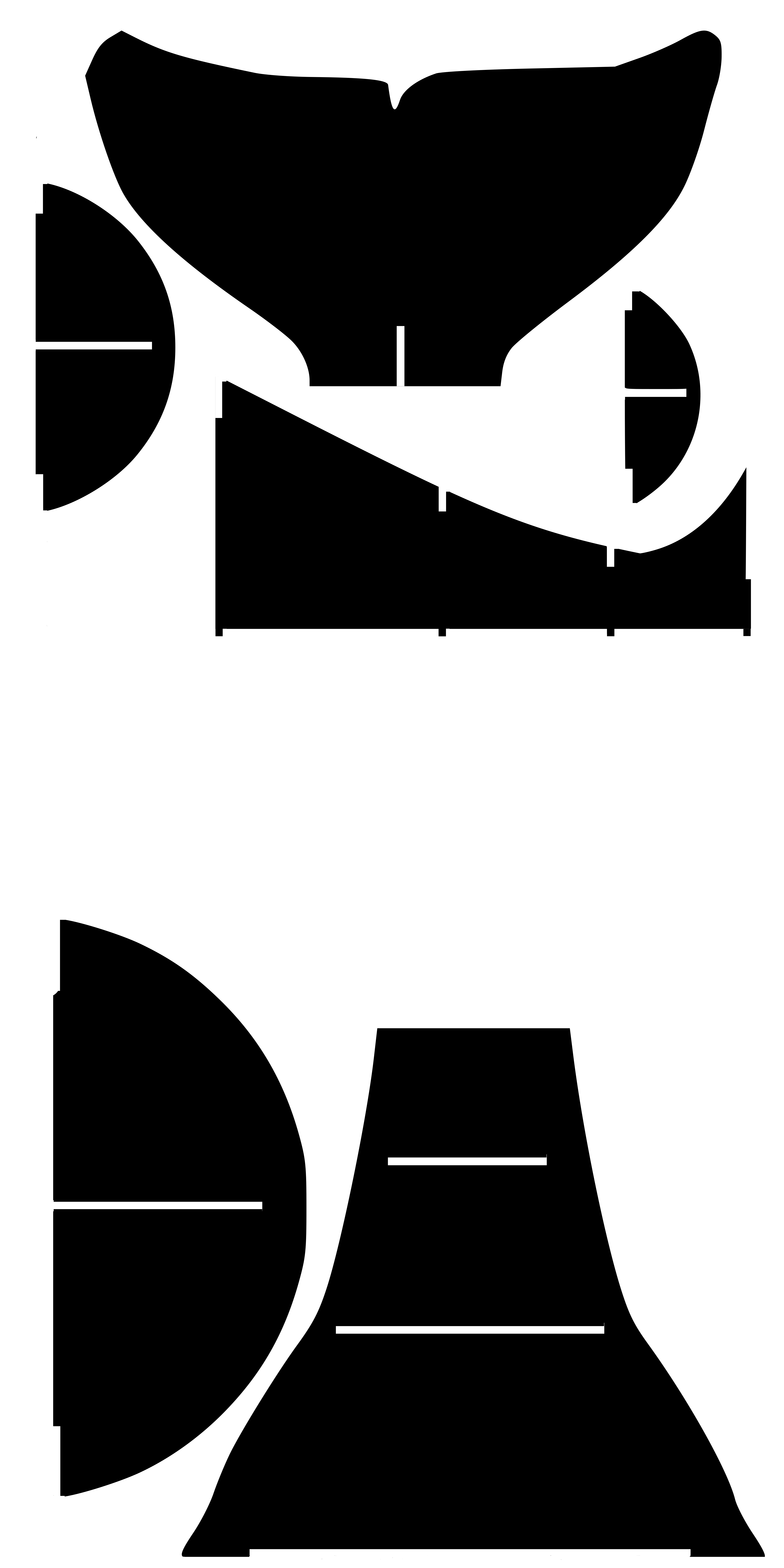
final design project for piece machine, w/ press fits added
machining
I split the final design into two 4'x4' sections to cut from two boards on the ShopBot buddy. I first cut a small test piece on the ShopBot Desktop with press-fit slits of a range of widths around the board thickness (~0.43''). I found the best fit was a 0.47'' slit.
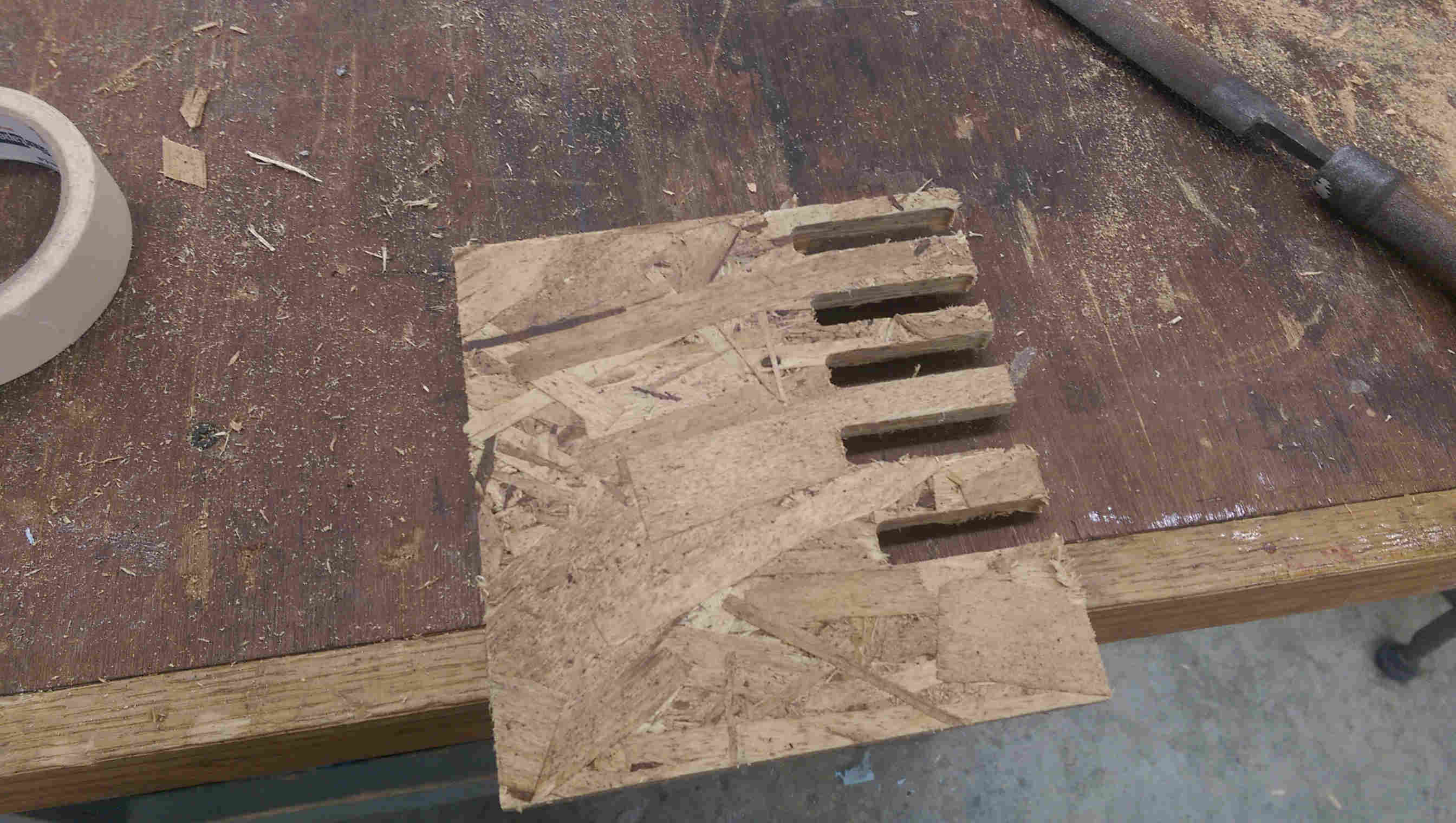
test piece
I then exported the .svg (touched up in inkscape after a Rhino export) to a .pdf to import into the shopbot software to define toolpaths. I milled with a 1/8'' downcut endmill; each of the two 4'x4' jobs took about 20 minutes.
I decided to use all of the material to make a standing desk. Overall, I was happy with this as an alpha version. Some of the fits weren't ideal and could be tinkered (especially the top desk - the central fit was slightly off-center, and it turns out the side that would have been up was the bad side of the wood. so I opted to flip it and deal with the misalignment to have a cleaner finish). As a follow-up I might try to make a smaller version, fitting all pieces into a single 4'x4' board for an end table.


